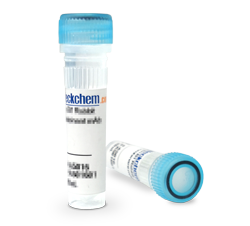|
受注:045-509-1970 |
技術サポート:tech@selleck.co.jp 平日9:00〜18:00 1営業日以内にご連絡を差し上げます |
化学情報

|
Synonyms | N/A | Storage (From the date of receipt) |
3 years -20°C powder 1 years -80°C in solvent |
| 化学式 | ||||
| 分子量 | CAS No. | 949109-75-5 | ||
| Solubility (25°C)* | 体外 | 4-Methylpyridine | 28 mg/mL | |
| DMSO | Insoluble | |||
| Water | Insoluble | |||
|
* <1 mg/ml means slightly soluble or insoluble. * Please note that Selleck tests the solubility of all compounds in-house, and the actual solubility may differ slightly from published values. This is normal and is due to slight batch-to-batch variations. |
||||
生物活性
| 製品説明 | Phytosterols, also called plant sterols or stanol esters, are specialized compounds found in plants that are structurally similar to cholesterol found in humans. |
|---|---|
| in vitro | Plant sterols or phytosterols are structurally similar to cholesterol and exist in several forms in plants, including β-sitosterol, campesterol, stigmasterol and cycloartenol. This compound can protect cells from damage by reactive oxygen species. It can promote cell apoptosis. The incorporation of this chemical into lipid rafts, altering their structure, may result in beneficial changes in signal transduction[1]. |
| in vivo | Phytosterol and stanol (or phytosterols) consumption reduces intestinal cholesterol absorption, leading to decreased blood LDL-cholesterol levels and lowered cardiovascular disease risk. Recent studies suggest that this compound inhibits the production of carcinogens, cancer-cell growth, invasion and metastasis, and promote apoptosis of cancerous cells. It occurs naturally in plants either esterified with fatty acids in the cell membranes or in free form within the cells. After ingestion, it is emulsified by bile salts secreted into the small intestine to form micelles for digestion. After micelle formation, the esterified form is hydrolyzed to free phytosterols probably by cholesterol esterase and pancreatic lipase enzymes. Free phytosterols are then absorbed into enterocytes. In the enterocytes, these compounds become esterified to fatty acids by acyl-CoA cholesterol acyltransferases, and combined with cholesterol, triacylglycerol and apolipoproteins to form chylomicrons. The chylomicrons are secreted into the lymph and then transferred to the bloodstream, where they are transformed to chylomicron remnants after the uptake of triacylglycerol by cells and transported to the liver. In the liver, they may either be used for synthesis of bile salts or be incorporated into very low-density lipoproteins and be secreted into the blood, from where they are converted to low-density lipoproteins and presented to cells for uptake. In the tissues, they are incorporated into the cell membranes and have been found to be highly concentrated in the lungs, adrenal cortex, intestinal epithelia and ovaries[1]. |
プロトコル(参考用のみ)
参考
|
長期の保管のために-20°Cの下で製品を保ってください。
人間や獣医の診断であるか治療的な使用のためにでない。
各々の製品のための特定の保管と取扱い情報は、製品データシートの上で示されます。大部分のSelleck製品は、推薦された状況の下で安定です。製品は、推薦された保管温度と異なる温度で、時々出荷されます。長期の保管のために必要とされてそれと異なる温度で、多くの製品は、短期もので安定です。品質を維持するが、夜通しの積荷のために最も経済的な貯蔵状況を用いてあなたの送料を保存する状況の下に、製品が出荷されることを、我々は確実とします。製品の受領と同時に、製品データシートの上で貯蔵推薦に従ってください。
